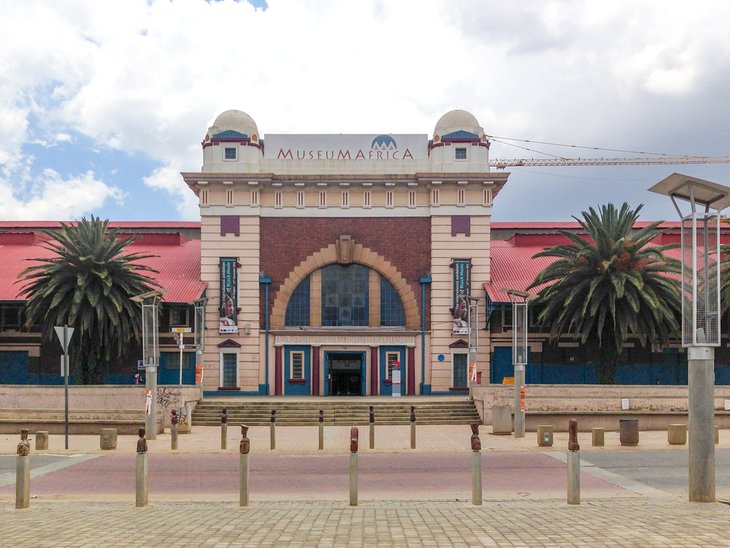All About Johannesburg North Attractions
Wiki Article
More About Johannesburg North Attractions
Table of ContentsThe Facts About Johannesburg North Attractions RevealedThe Ultimate Guide To Johannesburg North AttractionsThe Basic Principles Of Johannesburg North Attractions Johannesburg North Attractions - An OverviewExamine This Report on Johannesburg North AttractionsIndicators on Johannesburg North Attractions You Should Know
The city owes its area to the visibility of a a lot more valuable resource: gold. The city grew on the side of the Witwatersrand Main Reef, a below ground stratum of gold-bearing quartz-silica empire that arcs for hundreds of miles beneath the Highveld. The majority of the gold mines in the city stopped procedure in the 1970s, however in its day the Witwatersrand gold sector made up even more than 40 percent of the world's yearly gold production.Johannesburg has a pleasant environment. The city enjoys concerning eight hours of sunlight per day in both winter months and summertime.
What rain the city obtains falls virtually exclusively in the summer season, commonly in amazing late-afternoon electric tornados. Air pollution postures a substantial problem, especially in the cold weather, when thermal inversions hamper the westward circulation of air from the Indian Ocean. Air pollution is most serious in the largely cleared up Black townships on the city's periphery, where numerous homeowners still count on coal for gas.

Some Ideas on Johannesburg North Attractions You Need To Know
The equilibrium of the city is occupied by whites. Holiday accommodation varies in character and high quality.Physical growth, although rather limited by transportation, proceeded promptly as immigration to South Africa, and Johannesburg in specific, raised substantially. This issue was fixed in the 1930s when the automobile was introduced in automation to South Africa. Cars were, generally, constrained to the well-off, and permitted them to transfer to the north of the city and commute into the centre.
Most inadequate residential areas were combined, with poor blacks and whites living together, although the wealthy suburban areas were typically scheduled for whites. This changed with the election of the National Party in the 1948 elections, who started to formalise the system understood as apartheid. Racism formally marked which suburban areas each race might live in under the Group Locations Act.
The number of people living in the inner city on an informal basis is unidentified, as many are prohibited immigrants. The unemployment, education and learning, and age profiles of the location are all unknown, due to the difficulty of getting reliable info concerning the location.
The smart Trick of Johannesburg North Attractions That Nobody is Talking About
Yeoville and Bellevue have a mix of apartment structures and solitary residential units on tiny lots. The area is located on a mountainous divide that runs from east to west.
Johannesburg Stadium, a training ground for both the Golden Lions and Orlando Pirates, is surrounding. The eastern suburbs of Johannesburg lie in the city's 7th [] and 9th [] areas. The area is likewise functionally integrated with East Rand border communities beyond the main boundary of Johannesburg, such as Bedfordview and Edenvale (both component of Ekurhuleni Metropolitan District).
Getting My Johannesburg North Attractions To Work
The eastern suburban areas are some of the oldest locations of Johannesburg, there are large neighborhoods of Jewish and various other European histories, the majority of the populace is English speaking. There are 3 golf training courses as well as a number of secured ridges with viewsites.The location is mainly made up of old "matchbox" houses, or four-room residences developed by the government, that were constructed to provide economical holiday accommodation for black employees during apartheid. Soweto is an go to the website abbreviation, representing "South Western Townships". Street after road in this area is lined with matchboxes; nonetheless, there are a couple of smaller locations where prosperous Sowetans have actually built homes that are extra similar in stature with those in more affluent residential areas.
Hostels are one more popular physical feature of Soweto. Originally built to house male migrant employees, many have actually been enhanced as residences for couples and families. The N1 Western Bypass skirts the eastern boundary of Soweto. The residential area was not traditionally allowed to create work centres within the area, so practically all of its citizens are commuters to various other components of see it here the city.
Unknown Facts About Johannesburg North Attractions
The N1 Western Bypass attaches the northern suburban areas with the north-western residential areas. The houses in the northern residential areas are generally formal, without considerable areas of informal housing, or housing that does not have an irreversible structure. This is a recognized area, there is a pattern of land usage adjustment from household to industrial, specifically along main arterial roads and around established nodes.The area is well connected to road networks, specifically along the north-south axis formed by the M1 and N1. Roadways to the eastern and west are much less well established, as there are no highways travelling in that instructions. Towards the northern boundary of the city, the thickness of growth reduces, leaving huge locations visit site of undeveloped land around Midrand.
Johannesburg North Attractions Fundamentals Explained
The initial suburb to the north of the central city is Parktown, which is situated on a hill overlooking the internal city and Hillbrow. It has many wealthy homeowners and Edwardian-design mansions, as well as the Education and Medical schools of the College of the Witwatersrand. The big concrete Charlotte Maxeke Johannesburg Academic Hospital dominates the horizon of Parktown.Report this wiki page